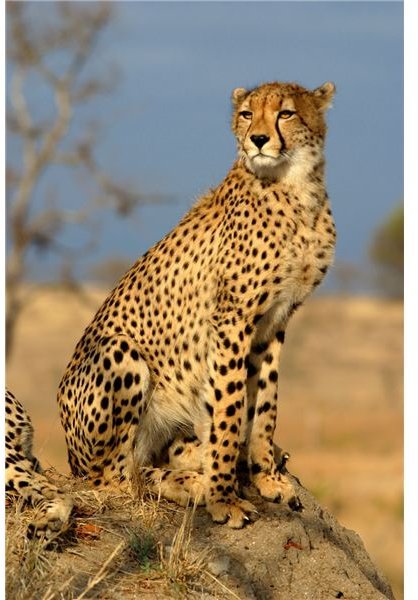Genetic Diversity of Endangered Species - The Cheetah
Cheetahs
The cheetah, apart from being a rare endangered animal, has one of the most curious genetic profiles on the planet. There are only a few thousand cheetahs around the world and they are all genetically identical.
Normally, there is a good bit of genetic variation between individual animals of the same species, and this genetic diversity is useful in protecting the species from genetic problems, infectious diseases and other health issues. It ensures that the species, individually and as a whole can adapt to changes in the environment and can continue to survive.
Cheetahs and Genetic Diversity
With cheetahs, on the other hand, there is no such genetic diversity, even amongst animals from different regions. The genes of different animals have been examined by DNA analysis methods and their genes have been found to be so identical as to appear to belong to a set of identical twins. Researchers have carried out successful skin graft experiments on cheetahs, proving further that they are so genetically similar that their bodies do not even reject tissue taken from a supposedly unrelated animal.
According to researchers, this lack of genetic diversity probably came about some 10,000 years ago when extreme climatic changes drove many animal species to extinction. It is thought that the cheetah species that got through this period (the species we now know as Acinonyx jubatus) found itself in a genetic bottleneck with only a few animals, probably no more than seven, surviving. This led to close relatives mating with one another, and this genetic inbreeding led to the cheetahs losing their genetic diversity as time went by.
Genetic Diversity and the Environment
This lack of genetic diversity is worrisome as it means that, unlike other species, the cheetahs are unable to cope well with environmental changes and are highly susceptible to epidemics. In case of a viral infection, for instance, all the individuals would have the same kind of reaction to it; they would either be able to fight it off or they would all die.
The poor sperm count of cheetahs is also a result of this lack of genetic diversity. Poor sperm count means that matings do not always lead to pregnancies and already small populations dwindle even further. Cheetahs in zoos usually have to be artificially inseminated to give rise to new litters.
In an interesting aside, field research on wild cheetahs has revealed surprising promiscuous behavior amongst female cheetahs that is not seen in other big cats. Female cheetahs can undergo induced ovulation, that is, they can produce a new egg each time they mate. This means that every time they mate with a different male, a different egg is fertilized, leading to a litter of cubs that may have individuals with different fathers. This may be an attempt to ensure some genetic diversity as well as to protect the cubs from being killed off by male cheetahs. Killing existing cubs by other males and mating to produce their own progeny is a common occurrence in lions, but not so much in Cheetahs.
Researchers however do not agree with the theory that lack of genetic diversity is detrimental to the survival of cheetahs. Some argue that considering the cheetah has survived for thousands of years without too much trouble, perhaps this species is meant to be genetically similar. The real survival problems faced by cheetahs, they say, are more of the human created sort - loss of habitat and loss of prey. And they believe that the reason cheetahs do not breed well in zoos can be explained by the fact that they are usually placed in the Big Cats section, near their natural arch-enemies, the lions.That would put anyone’s mind off sex.
